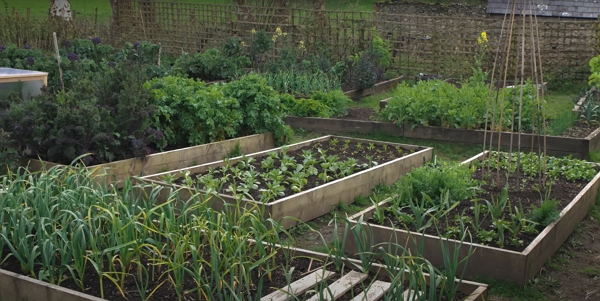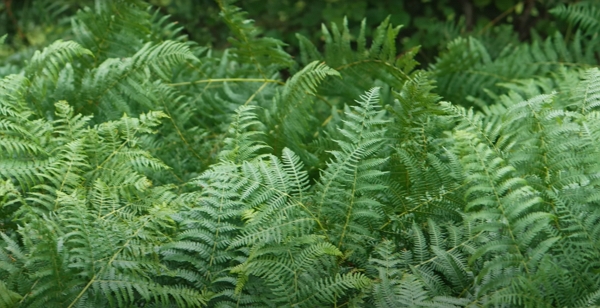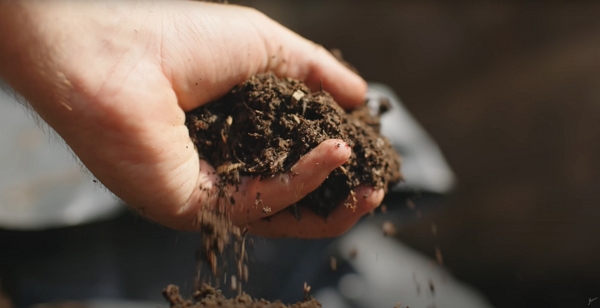Making your own compost is key to self-sufficiency and Huw will provide us with a few tips.
Thanks to Huw Richards for sharing his wisdom and knowledge! I wrote the following notes watching the video published on Huw Richards’s channel. You can watch it using this YouTube link.
Starting disclaimer
No everybody has access to the same resources and the same amount of each.
Also, we have different numbers of spaces to make and store the compost.
In this vlog, Huw showcases *his method to become self-sufficient in compost.
Definition of self-sufficiency
It can be different for all of us. To Huw, the goal is to create all the mulching compost he needs for the garden and for transplanting.
However, at the time of the shooting, he still purchases seed compost (e.g., potting compost) because he hasn’t perfected his own yet.
Self-sufficiency is a journey that takes time.
Types of compost
We find the following:
- standard compost, the one you apply in a layer of 2 to 3 cm each year on your beds.
- inoculated compost
- nutrishous compost
- and the fourth one can be in The Living Soil Handbook from Jesse Frost.
It’s available in France, in the UK and the US. It provides clear and detailed tips to build up life in your soil.
Jesse describes the four types of composts in depth.
How much compost
Huw’s favorite bed size is a 3 m by 1.2 m with a depth of 20 cm (rough estimate from the vlog).

For a mulch layer of 2 cm, it will require 100 liters of compost.
Count the number of beds you have and time that by 100 liters. It will give the compost amount you need for your garden.
Also, take a 20% extra so you’re sure not to run out.
Personal note
Of course, not everyone can build a garden with the same rectangular frame.
For instance, my garden has a weird shape, so the beds are rarely rectangular.
So make your beds with creativity, using the space efficiently,
Also, using the material you have available for free can decrease your bill.
Making compost
Remember: compost is decomposed material, it means that the original materials have been broken down and you will get about one third in the volume of what you put in on the heap.
Of course, this ratio is dependent on what you put on the heap.
When you look at the compost you need to make, you might feel overwhelmed.
So Huw suggests to spread the load.
Making compost in the alleys
Huw spreads all kinds of material in the alleys between the beds.
It equals to about 10 cm to 15 cm layer. When it’s ready, he sifts it.
That way he can get about 200 liters of compost, enough for the two beds.
Chicken compost
Checkout EdibleAcres and Geoff Lawton channels that talk about this topic.
The advantage of chicken compost is that the chicken will eat the seeds they find in the bedding.
Worm compost
This compost is usually very nutritious. It’s used more as a supplement rather than a sole use for your garden.
Hot beds
It’s more a gardening technique than a compost making technique.
Basically, it’s about using the warmth of compost in the making to grow vegetables you wouldn’t grow in certain times of the year.
And at the end, you have harvested the crops that grew in those hot beds and you will find yourself with a huge amount of great quality compost.
Sourcing materials
Grass clippings

Huw thinks it could work well on the previously mentioned deep mulch chicken compost.
Always be on the lookup
When you make your compost, you will need to be mindful to the material you can gather to make your compost.
People throw a lot of things that can go on the compost heap.
I’m preparing to look around my area to see who would be giving away their grass clippings, saving them time as they don’t have to go the local public waste factory.
Woodchips
Woodchips come not only from the freshly cut branches, but also the sawmill.
The first type, called fragmented rameal wood, comes from the small branches. Their width shouldn’t exceed 7 cm in diameter.
Those branches contain more nutrients than bigger pieces and, with two to three years, you can use it as compost.
Saw dust
Saw dust creates a fine texture because of its natural form.
So using compost with a good portion of saw dust might just be the good recipe for potting compost.
And you may wonder if it isn’t too high in carbon and that it might suck the nitrogen out of the ground. Well, it’s always a matter of balance. You won’t apply saw dust as is the beds. You will mix it with some green material and let it degrade.
Personal note
Having used saw dust the past year to make my compost from grass clipping mixed the saw dust and kitchen waste, I have to say that the result in terms of texture and look seems promising.
I will use it next year and I’ll report my findings.
A word of caution
Make sure the wood saw dust you collect is free from preservatives before you plan to put it on a compost heap.
Dead leaves
Same as saw dust, dead leaves are available and cheap, and mixed well with green materials, you can create a great compost.
Personal note
I use leaves as my winter duvet for the garden in a 10 cm to 20 cm layer.
Since I don’t have the best orientation in the winter with about four and a half hours of sun (weather permitting), I don’t plant anything during the winter months.
Last year was my first year applying this covering and by the end of this year harvest, I can tell you, the leaves have all disappeared.
I think it has helped to create a smoother soil, from which I can more easily pull out the weeds.
Coffee grounds

It’s high in nitrogen, so you can assimilate it to a green material.
Other materials
Obviously, your kitchen waste participate to filling the heap.
Personal note
I put in 5 liters of kitchen waste daily, mainly vegetables waste.
The local highly available weeds can become a great source of material. Huw has a lot of bracken (Pteridium) around his garden.

Cardboard suits a lot of applications in the garden: from covering in the No Dig method to brown material additions to the heap.
Glues on cardboard
Huw tells glues are almost always strach-based, meaning they come from a plant-based source.
But, verify your sources.
Huw lives near the coast so he harvests seaweed from the coastline after a storm or a high tide.
How to remove the salt
Lay it on the ground a little while then let it dry and it will be ready to use.
Finally, using cover crops produces a lot of materials to bulk up the compost heap.
Check out the channel David the Good as he explains it in these vlogs.
Set goals that you can attain
The first challenge is to gather the materials. Finding a place to pile it up won’t be a challenge.
So for your first year, brainstorm:
- where you can get the materials,
- then build your heap using wood pallets
- finally, start filling the first heap
Within a year, you will have your very own homemade compost.
Personal note
My goal for the 2022–2023 year is:
- Finding more sources of grass clippings closer to home, even if I can get a trailer-full of it from the mowing my company loan (I know nobody spray anything on it).
- Asking my local organic store for coffee grounds
- Getting more saw dust from the local sawmill that is only 5 min from my house.
- Growing more comfrey because it gives out huge leaves!
